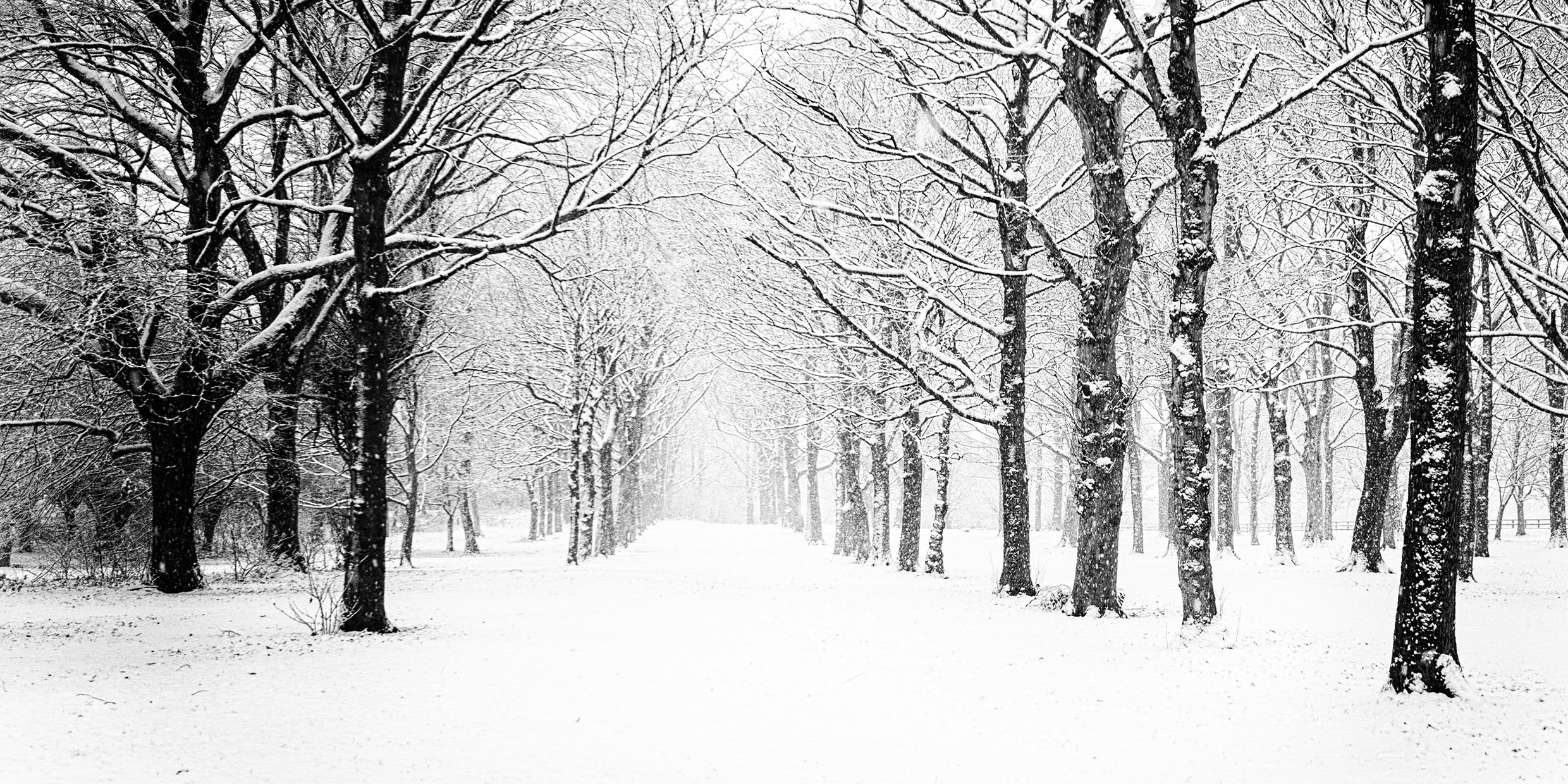Originally published 13 November 1989
October blew through the trees of New England like a slow hurricane of color. Gone now, all gone, leaving behind more brown litter than Hurricane Hugo. Now the naturalist must seek his color in bits and pieces.
The rosy cap of the russula mushroom hunkered down under brown leaves. The gaping yellow and scarlet berries of the bittersweet. The flash of red on the head of a wintering downy woodpecker. Snips of color. Bits and pieces. Winter is the season of black-and-white.
In her collection of essays, Diana & Nikon, photography critic Janet Malcolm notes that serious photographers have traditionally favored black-and-white film, and snapshooters use nothing but color. Paradoxically, she says, it is black-and-white photography that requires the photographer to pay close attention to the world in color, while color photography permits him to forget it. The one medium is hard, and the other easy. The one requires art and the other doesn’t.
And she’s right. Anyone can take a pretty picture of New England in October. Just point the camera in any direction and snap. The result may be pretty, but it probably won’t be art. The serious photographer resists “the blandishments of color,” says Malcolm, preferring instead the demanding discipline of black-and-white.
What is true for photographers is also true for naturalists. There’s not much to be learned from October’s Kodacolor spectacular. It is black-and-white winter that teaches us how to really see. Winter is the workshop of the naturalist’s art.
Winter weeds
My favorite of all nature guides is Lauren Brown’s Winter Weeds. Nothing fancy, no glossy color plates, just delicate line drawings of the subtle apparatuses of thorns, burs, seed pods, calyces, bracts — flowers undressed by winter, their hidden contrivances and secret strategies made clear. This is nature for the fine-tipped pen, not the Instamatic.
In her introduction, Brown quotes Thoreau on the “stately beauty” of withered vegetation that has withstood the winter, sometimes more obvious and interesting than in summer even, as if the beauty of the plants was not ripe until all the gaudy color faded. I remember using Brown’s guide to identify the winter remains of a plant called blue curls. Not a speck of blue, but tiny paper-crisp flames of brown, like upturned hands. No summer blossom could be lovelier.
Another excellent guide to the black-and-white world is Donald Stokes’ A Guide to Nature in Winter. Here is all the information one needs to read the fine hieroglyphics that stand revealed when autumn’s Crayola scribble fades. The burrowings of insects. Galls and cankers. Abandoned bird nests. Polypores and turkey tails, the winter mushrooms. Tracks in snow. The real goings-on of nature faithfully recorded in black-and-white.
Color is all the more precious in winter because of its scarcity. Nature’s colors have usually evolved for a purpose, and the purpose is sometimes more apparent when the color is seen in isolation. The yellow and scarlet fruits of bittersweet attract birds, which eat the berries and disperse the seeds through their feces. The male downy woodpecker’s red badge was presumably acquired through sexual selection.
The elegant leaves of the spotted pipsissewa, a delicate evergreen plant of the forest floor, whisper the greatest tale of all, the story of chlorophyll, best heard in the absence of summer’s din. Chlorophyll captures sunlight and enables plants to feed all life on Earth. The chlorophyll molecule absorbs red and blue light from the solar spectrum, reflecting green. The pipsissewa’s green, vivid on a field of snow, is life taking energy from a star.
October in New England
And what of the crimsons, oranges and yellows of New England in October? What story do they tell? In autumn, chlorophyll in the leaves of deciduous trees breaks down and other plant pigments — anthocyanins and carotenoids — come to the fore. Charles Darwin took note of the autumnal color that makes New England famous: “The tints of the decaying leaves in an American forest are described by everyone as gorgeous; yet no one supposes that these tints are of the least advantage to the trees.”
October’s riot of color is apparently an accident, an exercise in useless ostentation on the part of trees, and an embarrassment to evolutionists who like to find a reason for everything. The crimson splurge of autumnal maples is a waste, like the red of arterial blood, which, according to Darwin, “adds to the beauty of the maiden’s cheek, but no one will pretend that it has been acquired for that purpose.”
October is a gorgeous but meaningless extravaganza. November requires close attention to nature’s color. In a world of black-and-white we hoard the gold of the kinglet’s cap, the flecked pink of granite, blue shadows on snow. In winter, we really start to figure out what color is all about. Hard work. October was easy.



